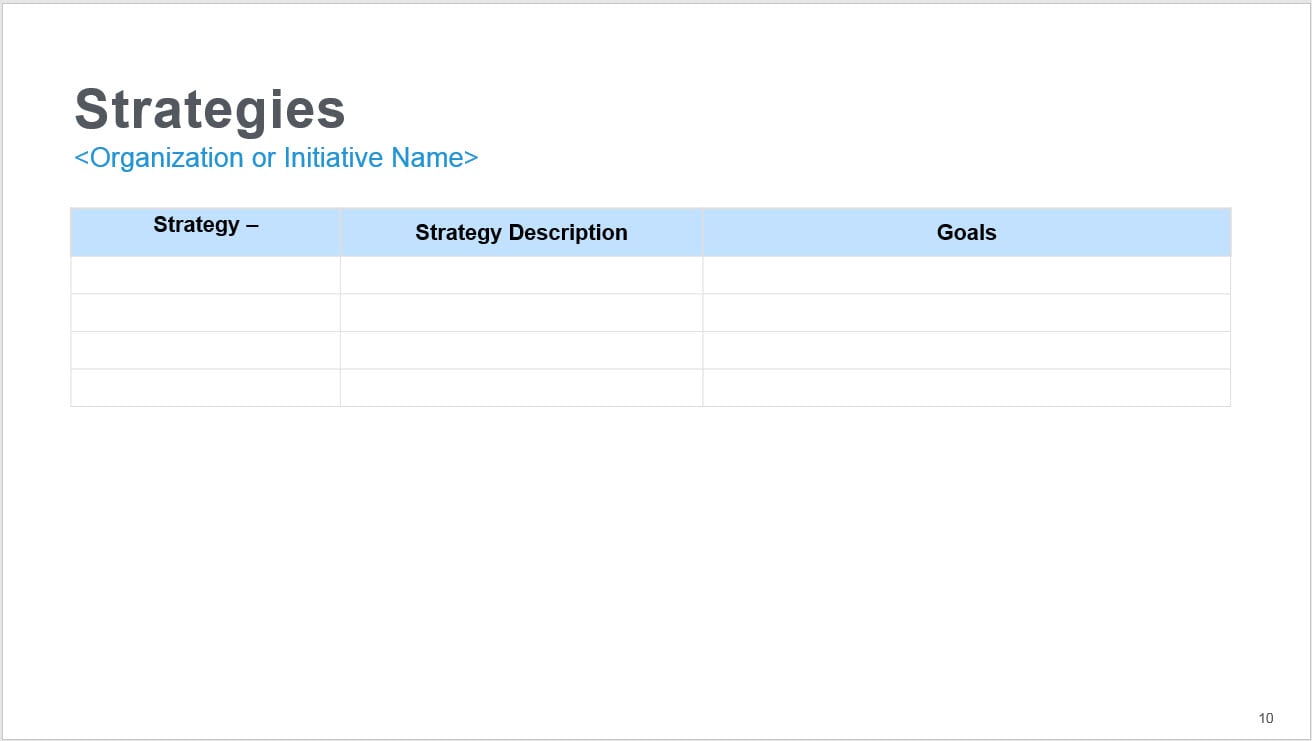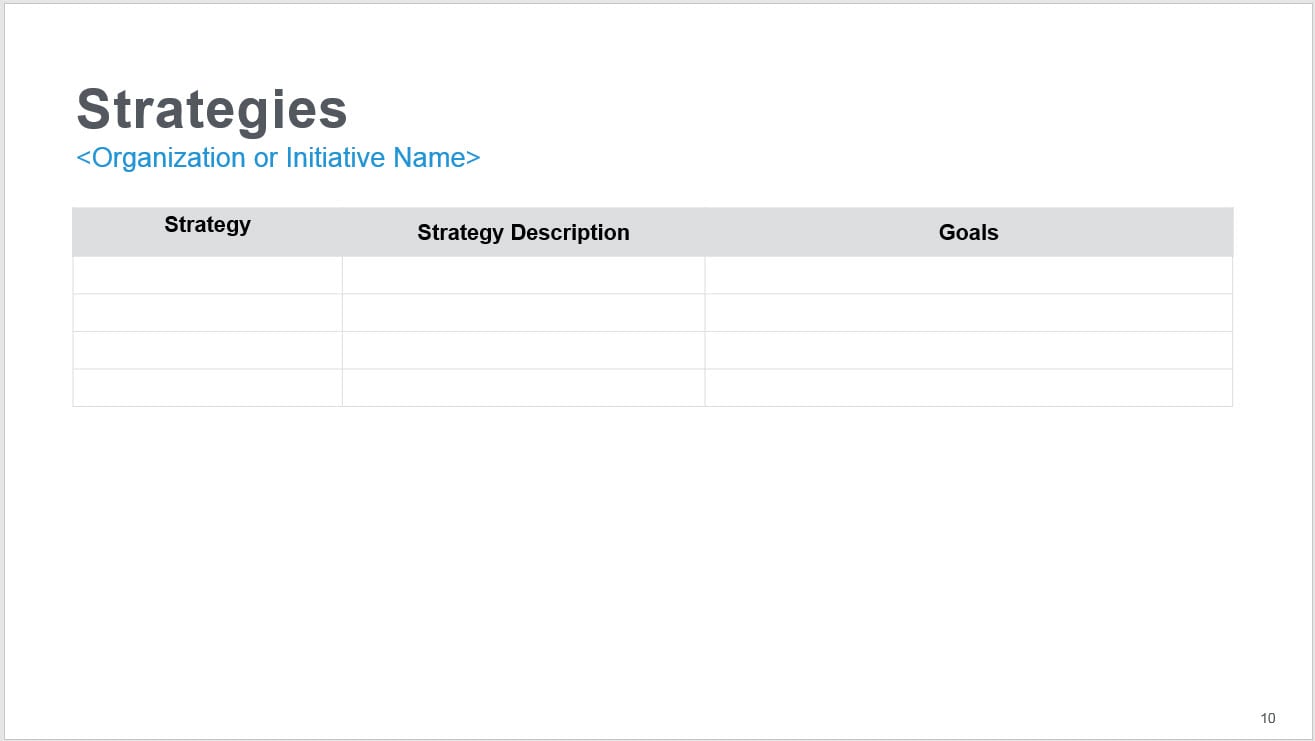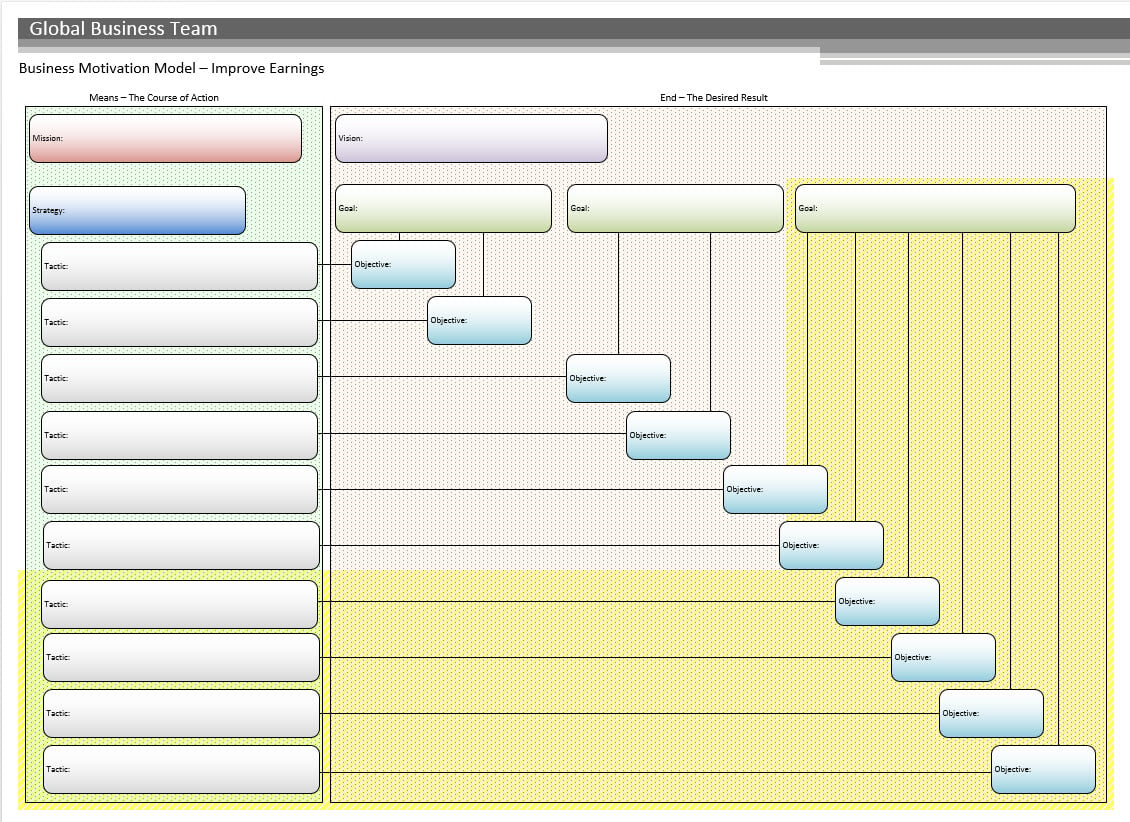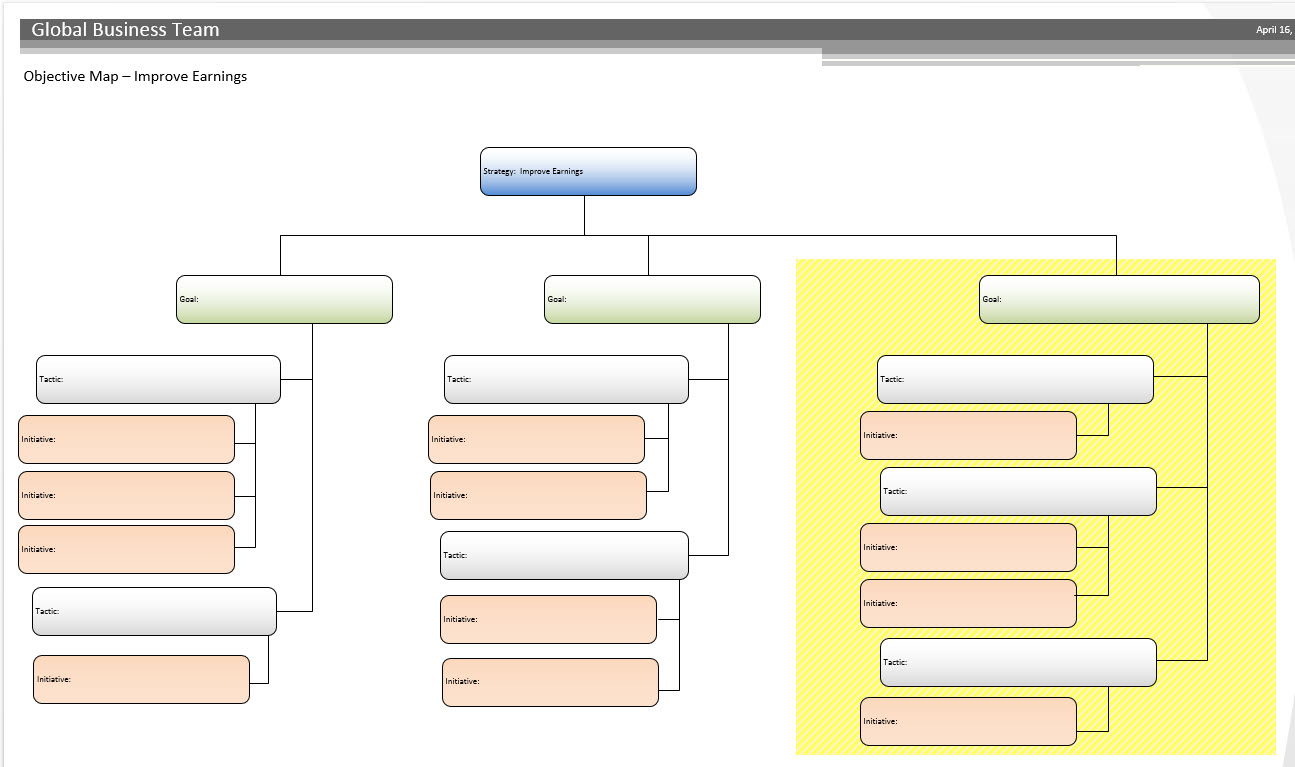The Strategic Business Analyst
So, you want to be more strategic as a Business Analyst? If you’re like me, you may have heard of other Business Analysts involved in Enterprise Analysis or Strategy Analysis and wondered, how can I incorporate these concepts into my role? Are there actually any Business Analysts who do this as part of their job?
I can emphatically say YES! The challenge is getting started and having buy-in from senior and executive management to view your process as a legitimate and effective way to develop strategy. You may need to apply a good amount of professional persistence, but small wins can lead to big wins; and a consistently polished approach can lead to success.
In this article, I will show how a combination of Techniques described in the BABOK® Guide v3 can be used to prepare for and facilitate a workshop that allows for strategic thinking and follow-up artifacts that solidify strategy and ensure its execution.
I will articulate how I have used a specific combination of these techniques, among others, to successfully lead a team of people from visualization, to strategy definition and into strategic execution. I’ve used the steps below when defining project and organizational strategy in their entirety and I’ve used pieces and parts of it. Don’t be married to the process; evaluate and find what will likely work best with your audience and in your unique situation.
Absorb what is useful, reject what is useless, add what is uniquely your own - Bruce Lee
![]()
Critical – Pay particular attention to these notes, as they describe critical areas to consider in order to have the most effective implementation of this strategy development approach.
Pre-Workshop Activities
1. Stakeholder Analysis (10.43)
The first step in any successful initiative is to ensure that you have the right people involved who 1) know the subject area that you’re planning to strategize around and 2) have some level of influence in not only defining but helping drive the execution of a strategy.
Consider not only high-ranking leaders from within the organization, but also forward-thinking rank-and-file that can lend detailed expertise about the day-to-day processes. This is also a good way to allow leaders to grow their people; by including their highest performers in the development of future strategy of their organization.
Your role as facilitator in future sessions will be to ensure the conversation doesn’t get mired in the minutia, by including people who know and have internalized the current process.
![]()
Having a “champion” who will help you corral the necessary attendees (and ensure they actually show up) is another critical component to success. You can work with this champion to identify the right people to be part of the discussion and define the scope of the session.
2. Brainstorming (10.5) | Workshop (10.50)
You may know the people you’ll be facilitating very well; you’ve gone to team building events together, your kids are on the same soccer team and you frequent the same social circles. Well today, you are their consultant. Your mindset in these sessions should be (needs to be) that of a consultant; one who has been hired for the day. Your job is to extract the thoughts, ideas and visions that people have in their heads and bring them to life. They need someone to help pull them out of their day-to-day and create a structure to capture their ideas.
Have you ever attended a workshop or a class that was run by a consultant who your company hired to train you? How did they act? How did they dress? How did they set up the room? How did you feel when they were up in front of the room speaking? Take these points to heart and create an environment that mimics this consultant approach. People will notice, and it will create a more effective environment.
![]()
Don’t take the casual approach or believe that these subtleties are silly. If you want to be effective and continue these sessions in the future, spend the time to nail each one as if your future consultancies depended on it.
- Maximum Participants of 8-10 People
- More is not better
- Having more than 8-10 people participating in the discussion often leads to side-conversations, digressions and is difficult to manage. The Parking Log (noted below) is an effective way to curb these diversions, but the more people involved the higher the chance to stray off course.
- Avoid Day-to-Day Spaces
- Get people away from their normal course of business day. If you have multiple buildings with conference rooms, try to find one that is not frequently used by attendees.
- If you have a specific location for training, reach out to your HR representative to see if you may be able to use a room for the duration of your strategy development session. In many cases, the HR team is very open to using well-structured training space to help facilitate business-specific vision and strategy development efforts.
- Provide Handouts, Pens and Notepads
- A handout should be created which at minimum details the agenda for the session, timestamps, scope of the discussion and include goals for the session. This workshop is not about you presenting; make sure the attendees know what is required of them.
![]()
This handout should be sent a few days prior to the session and be sent separately from the session invite. Quite often, people don’t review the invite contents or (at certain levels) have Executive Assistants who confirm their attendance without forwarding critical information.
-
- As noted in the Visualization section below, people need a way to immediately document what’s on their mind, when it’s on their mind. Not everyone will be prepared with pen and paper, so provide it and eliminate any chance for a lost thought.
- Large Whiteboard (Whiteboard Wall Preferred)
- If you’re able to secure a training space for your workshop, then there’s a high likelihood that you’ll have access to a whiteboard or an easel. I prefer a large whiteboard (or better yet, a whiteboard wall – every conference room should have a whiteboard wall!) so that I can let the drawing follow the flow of the conversation in the room.
![]()
Create a Parking Lot area to capture ideas that are likely to get you derailed during your discussion (out of scope areas)
![]()
Write the scope of the discussion somewhere that is visible throughout the session so that attendees can constantly be reminded of the conversation boundaries.
- Use a Scribe
- In order for you to most successfully manage the room, ask open-ended thought-provoking questions and capture the most important aspects of the discussion, I believe it is critical to have someone else who is able to take detailed notes on the conversation. Ask a colleague or your manager; this is a great opportunity to help grow someone else’s skill set in this area or showcase the benefits.
- If a scribe isn’t possible, a digital recorder may be your solution. Depending on the group and the topic(s) being discussed, the use of a digital recorder may turn some people off to speaking freely (something required if you want to have an accurate representation of strategy).

Always remember to notify the group at the start of the workshop that the contents are being recorded for your own purposes; ensuring the details of the discussion are captured accurately.
Workshop Structure & Execution
Timestamps are an effective way to manage the time you have with the team of people involved in your workshop. People’s time is valuable, so ensuring the effective completion of all of your agenda items will make all participants feel accomplished within the allotted time. The timestamps below assume you have about 90 minutes with your audience.
![]()
Creating a set of “brainstorming rules” for the workshop, including them in the handout and reviewing them with participants is a good way to ensure everyone has the same expectation and plays within the same boundaries.
1. Section 1 – Workshop Overview
- Suggested Time = ~10 minutes
- Provide a brief overview of the workshop agenda (including when breaks will occur), point out the scope of the discussion, where the bathrooms are, etc.
2. Section 2 – Visualization
- Suggested Time = ~10 minutes
- Visualization – Perform a visualization exercise with your group. Professional athletes, Olympians and a host of other elite performers use visualization to exercise their mind prior to performing. This step will also help people switch contexts from their responsibilities immediately prior to the workshop, to the scope and focus of the workshop.
- First Visualization – Current state, write down notes
- Second Visualization – Future state, write down notes
3. Section 3 – Mind Map (10.29)
- Suggested Time = ~15-20 minutes
- Draw a circle on the whiteboard and fill it with your area of discussion
- Allow the conversation to flow naturally
- Perform active listening and translate the conversation into specific points of interest to put onto the map
- Ask probing, open-ended questions to keep people thinking, talking and engaged
- See the note above about using a Scribe, this will help you summarize key points without losing the larger context of the discussion.
- When possible, leave the details captured during each Section of the workshop visible to participants to allow reference for future thoughts.
![]()
Be sure to take pictures of the whiteboard prior to erasing any content!
4. Section 4 – SWOT Analysis (10.46)
- Suggested Time = ~20-30 minutes
- There are a number of methods for performing analysis of current state and future opportunities, but I find that the SWOT method is simple, known by many and can garner great results.
- I’ve found that adding two components to the SWOT can actually make it even more potent tool; inclusion of Internal Influencers and External Influencers. These can help weed out additional stakeholders that you need to consider for additional information.
- Internal Influencers are those entities within your own organization that may have an impact on or may be affected by the area being evaluated. An example is another department or a parent company.
- External Influencers are those entities that are outside of your own organization that may have an impact on, or maybe affected by, the area being evaluated. An example is a competitor, a supplier or a vendor who works with your company.
5. Section 5 – Identify Strategic Themes
- Suggested Time = ~10-15 minutes
- Using multi-colored markers, begin to tag similar thoughts and concepts across each area identified on the white board.
- Each color represents a theme or pattern that has emerged around a given set of responses and may result in a highest-level strategic area that should be defined. Include only the top 3-5 areas that appear as recurring patterns, as these will set the high-level stage for all resultant Strategies, Tactics and Objectives.
6. Section 6 (optional) – Name the Strategic Themes
- Suggested time = ~10-15 minutes
- If the workshop has gone well and attendees are engaged at the end of the session, a fun closing that can be used is to try to come up with names that uniquely identify each Strategic Theme. These names can be specific to what your business does, aligned based on what the pattern is about or completely random.
- Some fun names that I’ve seen in the past include: “Jack and the Beanstalk (growth)”, “Battleship (vendor relations)”, “Jack be Nimble (organizational agility)”.
Post Workshop
The workshop is over, you’ve collected all of this great information, now what do you do with it? With significant time dedicated to preparation for and mental fatigue from the workshop it’s easy to sit back and take a breather; now is not the time to let off the gas pedal! With the pace of business today, the intricate details of your workshop will be quickly pushed to the side. Waiting to deliver useful artifacts will dilute the effectiveness of the information and the ability to take action on next steps.
![]()
Set aside time to debrief from the workshop in the 1-2 days after, with a goal of sending follow up artifacts to the attendees within 1 week following the workshop.
Because the workshop was primarily focused on major points of reference, much of the analysis and output that is presented in your preliminary artifacts will be based on the reference data collected in your workshop with context and gaps filled in by your own understanding. Be prepared to create and document many of the connections between major points based on your knowledge and experience from the workshop and the business in general.
Perfect is the Enemy of Good - Voltaire
- Artifact 1 – Follow Up Email – Send a follow up email the day after your workshop. Call out the fact that people just took 90 minutes out of their day to put their trust in you to help them extract a vision from their heads and document it. A simple Thank You will go a long way to continue your professional appearance following the workshop.
- Artifact 2 – Mind Map – Document the Mind Map that was created on the whiteboard as part of the workshop in its raw form. This will provide future reference for creating artifacts.
- There are a number of Mind Map software tools available for use, including Visio (Brainstorming Shapes stencil) and XMind.
- Examine Your Audience – Who will be consuming the information you’ve captured? If you’ve followed the advice above, you’ll have a mix of Executive or Senior level people, along with a few Tacticians. The goal for this first pass will be to provide tree-top level information, including spots of detail.
- Artifact 3 – Executive Presentation – A great way to share the information in an Executive Summary form is through a PowerPoint (Keynote, Prezzi, etc.) software. If your department has a standard presentation template, use it (Bonus Points – if you’re developing a strategy for another business unit, use their standard template).

Example structure for presenting Strategic Themes

Example structure for presenting Strategies
- Artifact 4 – Business Motivation & Objective Model (Report) – This “report” is actually a series of spreadsheets, one for each Strategic Theme that was identified in the Workshop. Each tab represents a Strategy that was discussed. Within each Strategy is an opportunity to get tactical, by leveraging the notes and reference data (Mind Map) to flesh out Goals / Objectives, Initiatives that may be required.

Example structure for presenting more Tactical initiatives, tying them back to the Strategy, Mission and Vision
- Artifact 5 – Business Motivation & Objective Model (Diagrams) – These diagrams show a quick high-level view of the captured data in a structured way that provides visibility from top-level Vision to bottom-level Tactics and Business Objectives.

Example structure using the Business Motivation Model structure, showing the Means and the End

Example structure for going Tactical, while keeping a focus on the lineage to the Strategy
Next Steps
If you’ve made it this far, you’re on a solid path to success in your pursuit of being a Strategic Business Analyst and a valuable asset to your organization. A single workshop and the above artifacts are not the end to your journey, rather just the beginning. Now that you’ve defined a high-level structure the lower level details can continue to be fleshed out with smaller, more focused meetings; while allowing you to stay within the bounds of a well-defined strategy. The result will be the funding and execution of tactical projects, which are in direct alignment with a defined future vision.
Applying a strategic mindset doesn’t come easy, there will be days of accomplishment and days of defeat, but the value added from defining and following a structured approach will set the course for you and your organization like a North Star in the night sky.
A journey of 1,000 miles begins with a single step – Lao Tzu